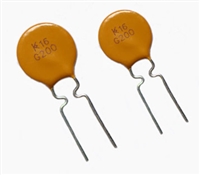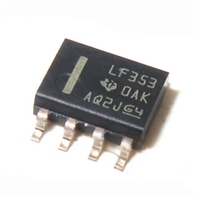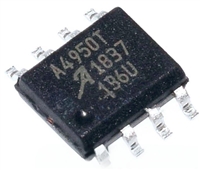| 是否无铅: | 不含铅 | 是否Rohs认证: | 符合 |
| 生命周期: | Active | 零件包装代码: | QFN |
| 包装说明: | VQFN-40 | 针数: | 40 |
| Reach Compliance Code: | compliant | ECCN代码: | 5A992.C |
| HTS代码: | 8542.31.00.01 | Factory Lead Time: | 6 weeks |
| 风险等级: | 1.57 | Samacsys Confidence: | 4 |
| Samacsys Status: | Released | 2D Presentation: | https://componentsearchengine.com/2D/0T/413716.1.1.png |
| Schematic Symbol: | https://componentsearchengine.com/symbol.php?partID=413716 | PCB Footprint: | https://componentsearchengine.com/footprint.php?partID=413716 |
| 3D View: | https://componentsearchengine.com/viewer/3D.php?partID=413716 | Samacsys PartID: | 413716 |
| Samacsys Image: | https://componentsearchengine.com/Images/9/CC2571RHAT.jpg | Samacsys Thumbnail Image: | https://componentsearchengine.com/Thumbnails/1/CC2571RHAT.jpg |
| Samacsys Pin Count: | 41 | Samacsys Part Category: | Integrated Circuit |
| Samacsys Package Category: | Quad Flat No-Lead | Samacsys Footprint Name: | RHA (S-PVQFN-N40)_1 |
| Samacsys Released Date: | 2017-04-25 16:59:09 | Is Samacsys: | N |
| 总线兼容性: | SPI; UART | 外部数据总线宽度: | |
| JESD-30 代码: | S-PQCC-N40 | JESD-609代码: | e4 |
| 长度: | 6 mm | 湿度敏感等级: | 3 |
| 端子数量: | 40 | 最高工作温度: | 85 °C |
| 最低工作温度: | -40 °C | 封装主体材料: | PLASTIC/EPOXY |
| 封装代码: | HVQCCN | 封装等效代码: | LCC40,.24SQ,20 |
| 封装形状: | SQUARE | 封装形式: | CHIP CARRIER, HEAT SINK/SLUG, VERY THIN PROFILE |
| 峰值回流温度(摄氏度): | 260 | 电源: | 3 V |
| 认证状态: | Not Qualified | 座面最大高度: | 1 mm |
| 子类别: | Other uPs/uCs/Peripheral ICs | 最大供电电压: | 3.6 V |
| 最小供电电压: | 2 V | 标称供电电压: | 3 V |
| 表面贴装: | YES | 技术: | CMOS |
| 温度等级: | INDUSTRIAL | 端子面层: | Nickel/Palladium/Gold (Ni/Pd/Au) |
| 端子形式: | NO LEAD | 端子节距: | 0.5 mm |
| 端子位置: | QUAD | 处于峰值回流温度下的最长时间: | NOT SPECIFIED |
| 宽度: | 6 mm | uPs/uCs/外围集成电路类型: | MICROPROCESSOR CIRCUIT |
| Base Number Matches: | 1 |
| 型号 | 品牌 | 描述 | 获取价格 | 数据表 |
| CC2571RHAR | TI | 1- and 8-Channel ANT? RF Network Processors |
获取价格 |

|
| CC2571RHAT | TI | 1- and 8-Channel ANT? RF Network Processors |
获取价格 |

|
| CC2590 | TI | 2.4-GHz RF Front End, 14-dBm output power |
获取价格 |

|
| CC2590RGVR | TI | 2.4-GHz RF Front End, 14-dBm output power |
获取价格 |

|
| CC2590RGVRG4 | TI | 2.4-GHz RF Front End, 14-dBm output power |
获取价格 |

|
| CC2590RGVT | TI | 2.4-GHz RF Front End, 14-dBm output power |
获取价格 |

|
 NTC热敏电阻与PTC热敏电阻的应用原理及应用范围
NTC热敏电阻与PTC热敏电阻的应用原理及应用范围

 GTO与普通晶闸管相比为什么可以自关断?为什么普通晶闸管不能呢?从GTO原理、应用范围带你了解原因及推荐型号
GTO与普通晶闸管相比为什么可以自关断?为什么普通晶闸管不能呢?从GTO原理、应用范围带你了解原因及推荐型号

 LF353数据手册解读:特性、应用、封装、引脚说明、电气参数及替换型号推荐
LF353数据手册解读:特性、应用、封装、引脚说明、电气参数及替换型号推荐

 A4950资料手册解读:特性、应用、封装、引脚功能、电气参数及代换型号
A4950资料手册解读:特性、应用、封装、引脚功能、电气参数及代换型号
